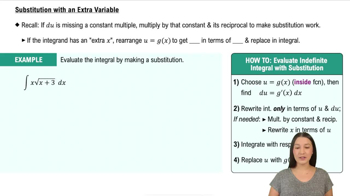63. Explain why or why not Determine whether the following statements are true and give an explanation or counterexample.
a. If m is a positive integer, then ∫[0 to π] cos^(2m+1)(x) dx = 0.
 Verified step by step guidance
Verified step by step guidance Verified video answer for a similar problem:
Verified video answer for a similar problem:



 5:43m
5:43mMaster Definition of the Definite Integral with a bite sized video explanation from Patrick
Start learning